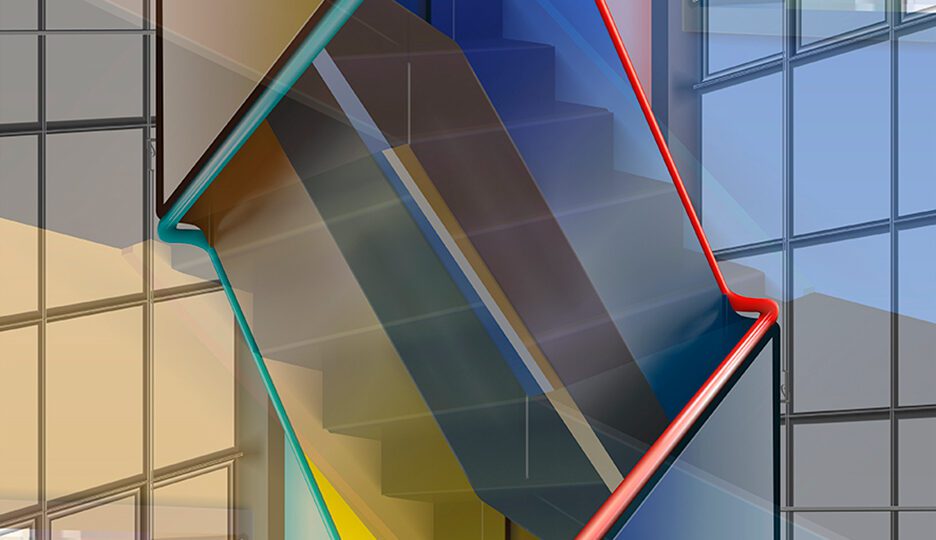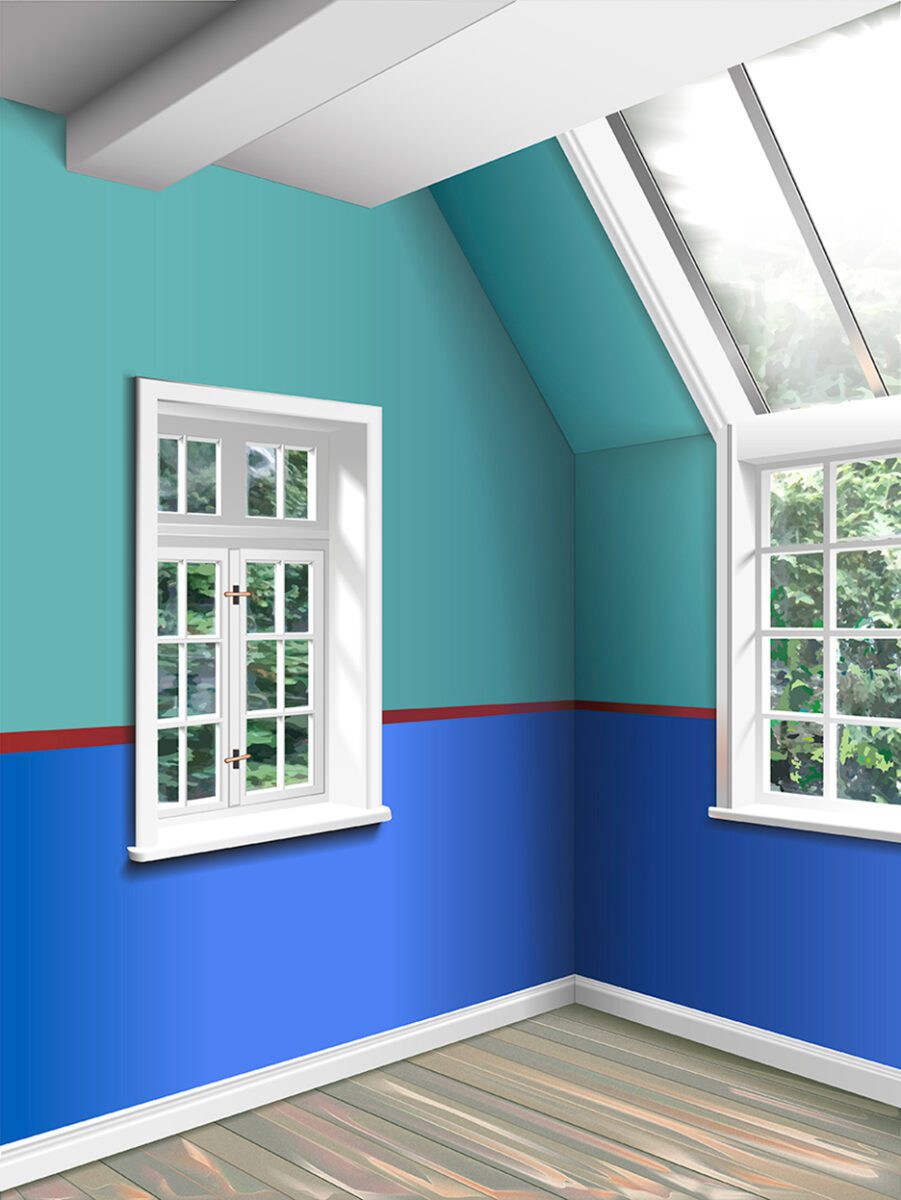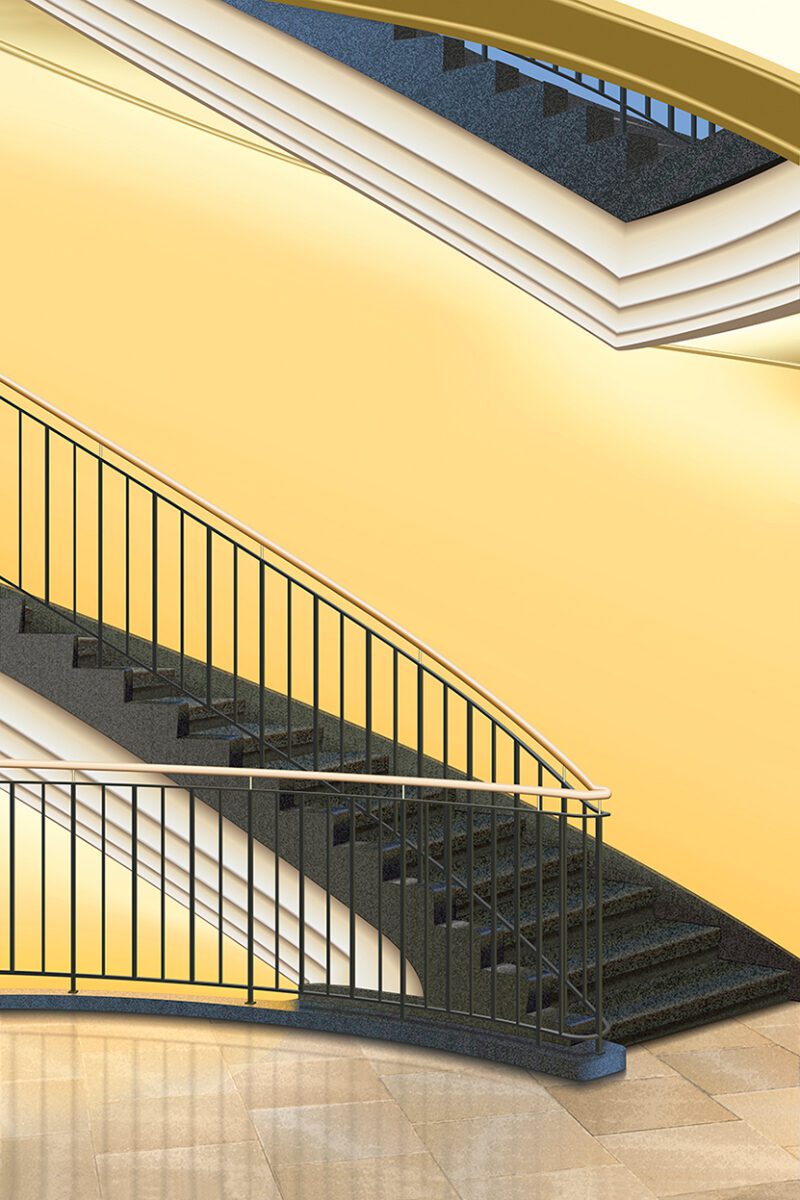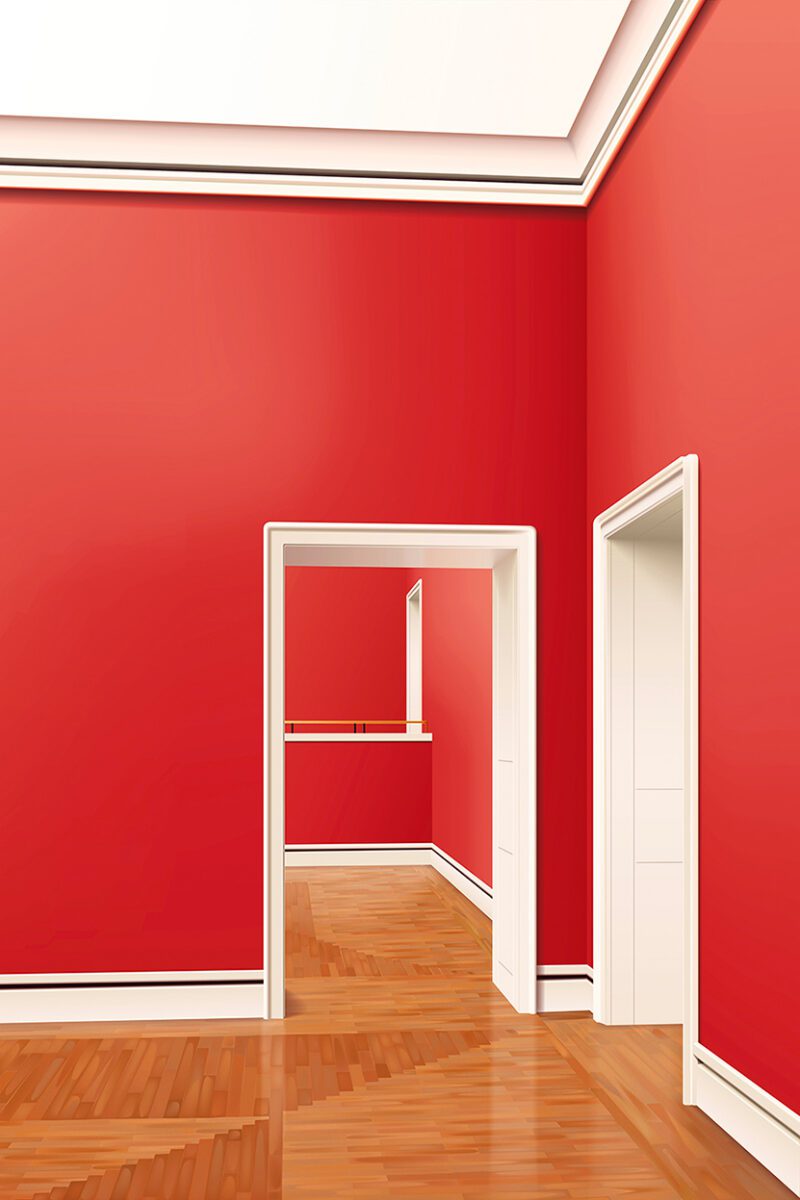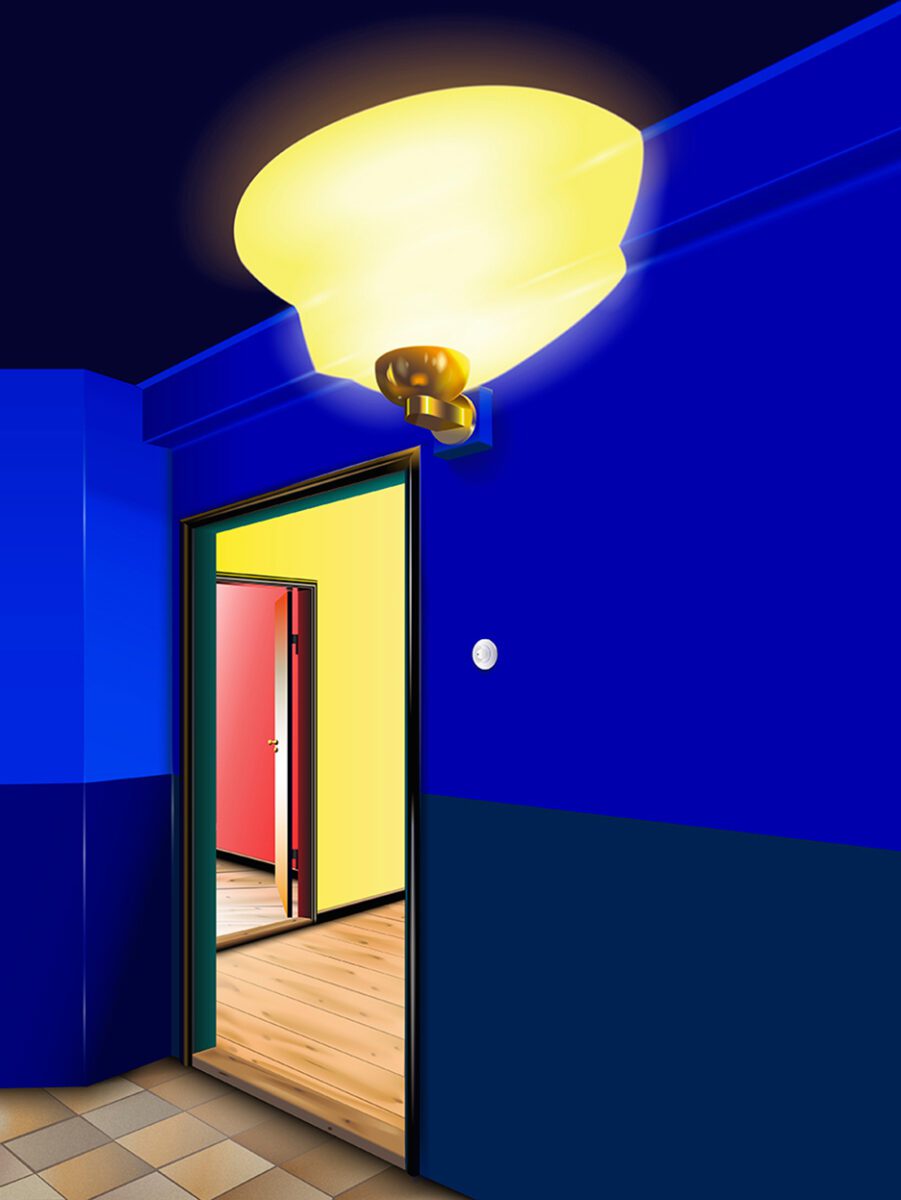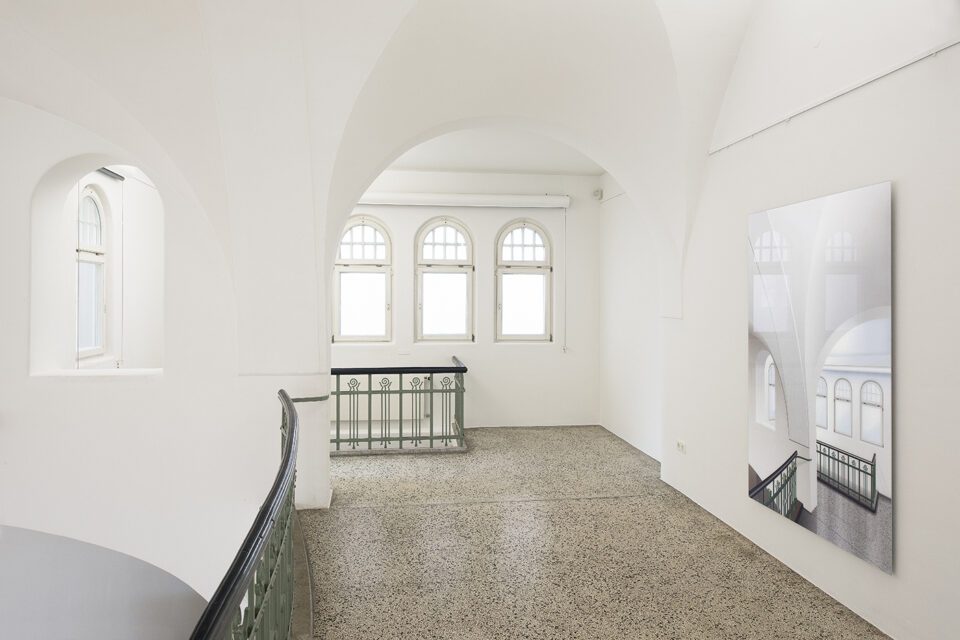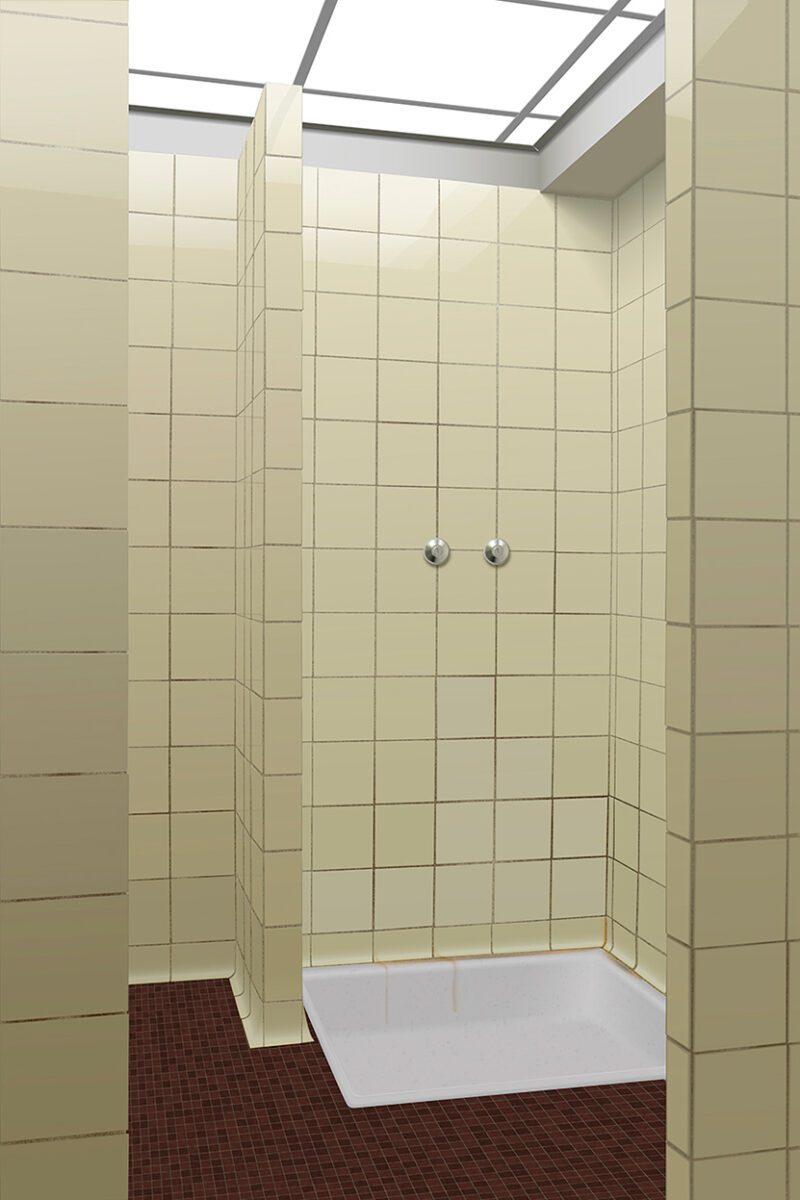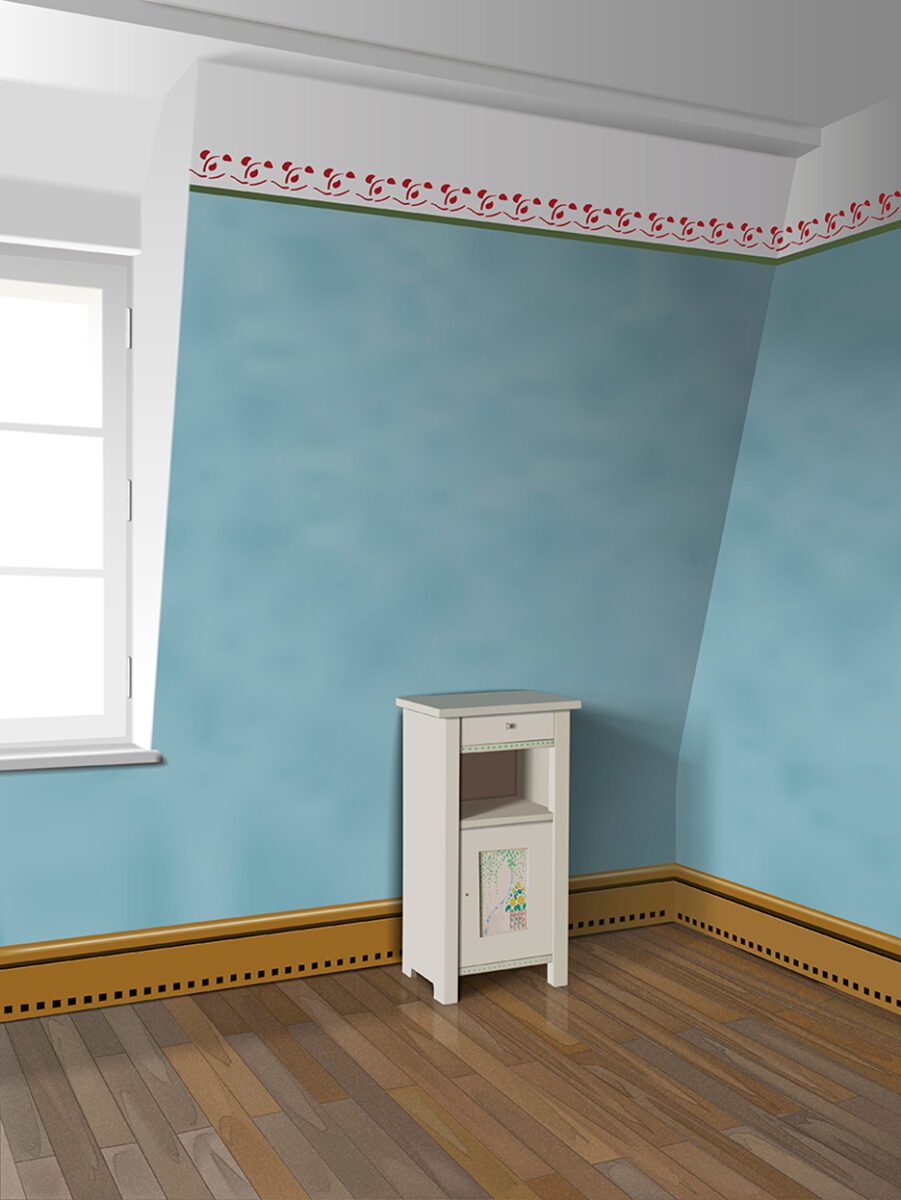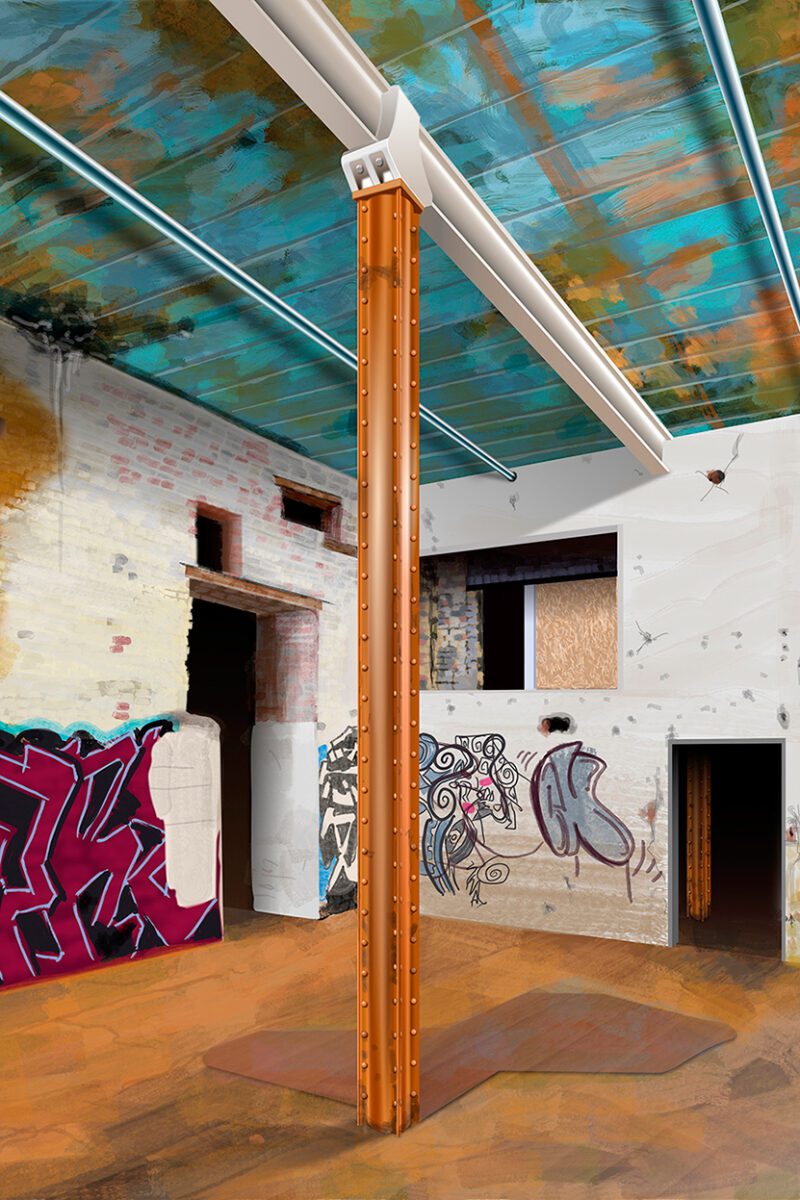Thomas Witzke is a painter, photographer and digital artist based in Stuttgart and Ulm. He focuses on the narrative aspect of colour; this is perhaps best expressed in the L’art pour L’art series, in which the viewer is invited to explore rooms in museums and artists’ studios. This award-winning series has been shown in numerous exhibitions.
A: In Issue 104 of Aesthetica, we feature six works from L’art pour L’art. What was the inspiration behind the series?
TW: A well-known music manager once advised me as a young artist that I should provoke a scandal in order to become famous and successful as an artist. I thought about it for about twenty years and came to the conclusion that in this art world rich in staged scandals and routinely calculated provocations, calling my major work L’art pour L’art was the greatest possible provocation for me.
But seriously, I felt a deep need to make a work of art about art itself. Many artists, especially young ones, deal with all aspects of life in their art. Often these works are critical of the system and that’s a good thing in these times –they ask the right questions. But what interests me most is the question of why art can sometimes touch us deeply, even move us to tears and comfort us. This feeling is not triggered by the daily political aspect of a work of art, but by something else, and I am on the trail of this something else with L’art pour L’art.
A: Is there an image that you think encapsulates L’art pour L’art?
TW: There are two pictures that are particularly important to me personally. The first is Paula Modersohn-Becker’s studio in Worpswede. I was allowed to live and stay there for a few days during my research. The work of Paula Modersohn-Becker, who heralded modernism even before Picasso, also touches me deeply because the painter worked consistently on her work against all odds and was completely unknown during her lifetime.
Being allowed to live in her studio for a few days was for me the most extraordinary experience in the context of this work. After her early death, over 700 paintings were found in her studio that no one had ever seen before – even her husband, the painter Otto Modersohn, was surprised by their modernity. This new pioneering painting was simply “l’art pour l’art” until the painter’s death, after which it wrote art history.
Secondly, it’s the first picture in this series that I drew, namely the Museum Berggruen in Berlin.
A: The process behind the creation of the series is quite detailed; what is the thinking behind this, and was the creation of the works an evolution in technique, or more of a trial-and-error approach?
TW: Both. In the beginning, the idea was to do something about art itself. First I tried painting, but that didn’t work at all. Then I tried photography, which drew the eye too much to the details. I didn’t want to make what we call in German “Wimmelbilder” – pictures with too many things that only distract you.
Then I remembered the technique I had learned as a media designer: vector drawing. This technique is used more by illustrators or comic artists, and are mostly very colourful and very two-dimensional. When I started the picture of the Museum Berggruen, I quickly realised that this three-dimensional photorealistic style, as I developed it, creates something very special.
I drew and learned on this first picture every day for half a year. That is why it is so important to me. In these pictures, thousands of lines condense into a surreally sharp three-dimensional image that nevertheless radiates something strangely abstractly two-dimensional. An intense calm emanates from these pictures, which as vector drawings have no size of their own. The only limitation results from the laser exposure and the largest possible available non-reflective museum glass of 3m in height.
Even though there is a lot of background information on this series, it’s important that these pictures also work if you know nothing about them at all.
A: You’ve mentioned that these spaces are “much more than just places for presenting art…the museum is a place in its own right which deserves almost the same cultural significance as art itself.” When and where did you first think about this – was it in particular museum?
TW: It was at the Musée Picasso in Paris. After seeing the exhibition, I sat in the garden in the café and thought: what a beautiful place. I think a lot of people feel the same way – that they can’t separate this feeling of having just seen great art from the museum that displays the art. I wanted to describe exactly this feeling. Of course I couldn’t draw the art within the museum, as that would be a bad copy. So I left out the art and drew the empty rooms. Many visitors to my exhibitions have told me that this musuem or that museum feels the same.
A: How does this thinking link to the phrase “art for art’s sake”?
TW: The term “l’art pour l’art” has a rather negative connotation today. In the romantic period, however, it had a very positive connotation in the sense of the purity of art; in the Biedermeier period, the term first acquired a negative connotation and tended to describe artists who sat in their ivory towers, oblivious to the world, as in Spitzweg’s work.
The title L’art pour L’art for my series means to focus on the essential. We all have an opinion about everything, but what do we really feel and what makes us afraid or happy? In this turbulent time, I want to say: “slow down, look where you are and ask how does it feel? In this moment, there is only you and art in this room.” Okay, maybe the art therapist in me comes through. Because of this reflection, however, it is always important to show a picture of the room in which the visitor is currently standing in an exhibition, as can be seen in the photo of the Staatsgalerie Stuttgart or in the picture of the Kunstmuseum Heidenheim.
A: The phrase was coined in the 19th century; how have art movements from this period influenced your work?
TW: I am a big fan of impressionism, which discovered the independence of colour, and Romanticism, in which artists developed their own theories of art for the first time, such as Philipp Otto Runge. As a studied art historian, I am always interested in historical contexts and artists’ theories. I can’t switch that off in my artistic work process.
A: What about specific 19th century artists?
TW: I’m working on Cézanne’s studio at the moment; his studio is quite amazing. It looks as if he is about to walk in the door. Cézanne is a central artist for me. Not only because he ushered in modernism, but because he managed to paint rather the air between things, achieving a shimmering density and luminous diaphaneity in his paintings, and also because he struggled with the human figure. Next, I’ll draw the Monet’s garden at Giverny, because he brought the studio outdoors.
A: How do artists’ studios fit within the L’art pour L’art series?
TW: At the beginning of this series, I had actually only planned pictures of museum spaces. But then I quickly realised that artists’ studios are just as important as museums when it comes to places of art. The studios are the beginning of art and the museums represent the flowering of art.
Most of the historic studios that have survived are open to the public, so in other words, they have become museums themselves. This series shows artists’ studios from 700 years of art history: from Giotto to contemporary artists. Not only by famous artists of art history, but also by very young contemporary artists.
For the still-living famous artists who are important to me, it was difficult to convince them of the project. For example, I had inquired at Gerhard Richter’s studio and received at least a very polite refusal. I can understand that, because the studio of an artist, famous or not, is always a private and protected space. That’s why I mainly asked artists who were friends of mine and whose trust I already had anyway. It is also good for the series to show only studios of female contemporary artists.
A: Do you think that “art for art’s sake” has a place in 21st century art? Or do you think that it’s inevitable that all art created now has some kind of inherent purpose or message, even if it’s done subconsciously by the artist?
TW: I believe that every good work of art contains its own truth. It’s about that certain something. In France they say “je ne sais quoi”, which I address in my series. It’s about condensation and about the greatest possible approach to a theme, regardless of whether it’s abstract colour in painting or a performance critical of the system.
When art creates this condensation, then that certain something arises that is inherent in all good art. It’s a bit like quantum physics: the closer you get to the core of a particle, the more blurred and mysterious it becomes. The particle eludes exact determination; it can be interpreted both as matter and as a wave at the same moment.
It’s the same with art. In the end, we can only approach its mystery. But that’s the beauty of it – it leaves a lot of room for interpretation. We artists are also searching for a world formula. In the end it may not exist at all, but only in this dense approximation to a secret.
A: Do you plan to travel further afield, to museums beyond Europe?
TW: Yes. I miss travelling a lot in the pandemic. When this nightmare is over, I’d love to travel to England to draw William Turner’s house, for example, and also the Tate Modern. In New York, I’d love to draw the studios of Edward Hopper, Eva Hesse and Keith Haring.
Outside Europe and the USA, I’d like to discover museums and studios in Africa, South America and Asia, such as the Zeitz Museum of Contemporary Art Africa in Cape Town or the Niteroi Contemporary Art Museum in Rio de Janeiro. But that also depends on the success of my series, how far I can go in these circles.
A: What do you think of repurposed spaces – for example, a disused church or a shipping container that now houses art exhibitions?
TW: I think such places are wonderful, as art can be in any place. The most unusual place I have been allowed to show this series so far was a staircase to a public toilet on the banks of the Danube. There I showed the stair compositions.
During the exhibition there was a flood and the pictures were hanging half a metre above the water, which was absolutely surreal. The picture of the shower from the Haus der Kunst is still hanging there near the toilet. When I think of a disused church, I immediately think of St Agnes in Berlin with the König Galerie. Maybe I should ask Mr König if I can draw that.
A: Would you consider depicting spaces which feature other forms of art – for example, public libraries, opera houses and theatres?
TW: Yes, I also find that appealing. Since my second passion is writing, I thought of the Hölderlin Tower in Tübingen, for example. Hölderlin lived in this tower for 36 years and never left it for fear of the world, so it really is an ivory tower! As the vector drawings take a lot of time, I also have to be careful not to choose too many motifs. In the end, maybe 50 pictures would be good for the series, which makes for an exciting exhibition.
A: What about the huge warehouses which hold art collections that museums don’t have the room for – do you see these warehouses as spaces in their own right? What if the public were to have access to them?
TW: That would be absolutely fantastic if I had access to this “sleeping art”. That would be a whole new idea for one of my next projects.
Making these places public is perhaps illusory, but bringing the large warehouses in the free trade zones of large airports into the public eye, for example, would also shed light on the aspect of art as a commodity and financial investment. These warehouses are also “l’art pour l’art” in a negative sense, as long as no one is allowed to see the art there.
A: How do you think your practice will evolve over the next five years?
TW: In Germany there is a saying that it is good to be independent of success and failure. But in real life it’s not always quite that simple. This central work of mine certainly deserves more international recognition; a nice start was to be awarded at the Chelsea International Fine Art Competition 2020 in New York. But maybe it would just be nice to be done with this Sisyphean work in five years.
kunstmedia.com | Instagram:@thomaswitzke9
All images courtesy of Thomas Witzke.
The work of Thomas Witzke appears in the Artists’ Directory in Issue 104 of Aesthetica. Click here to visit our online shop.


